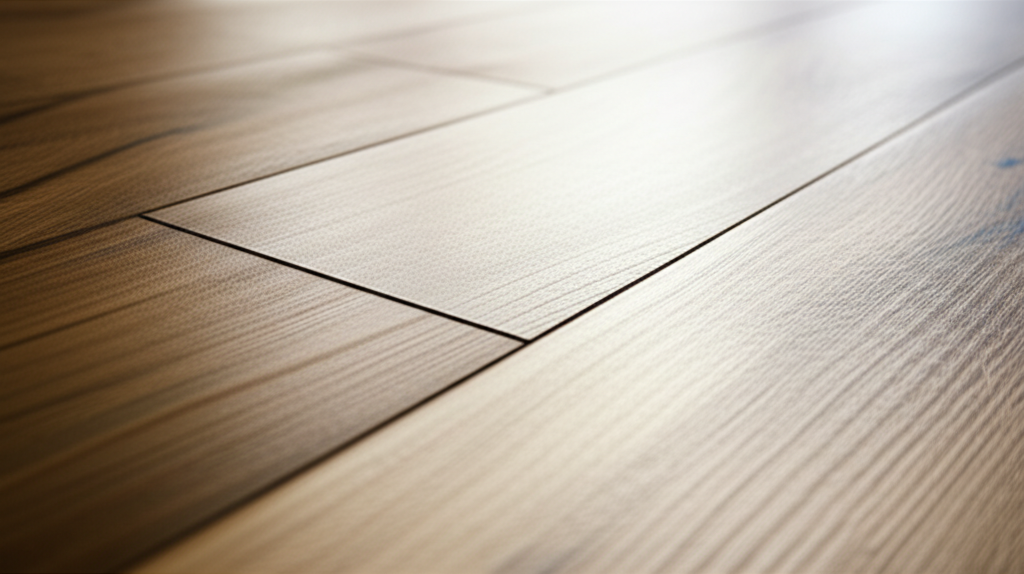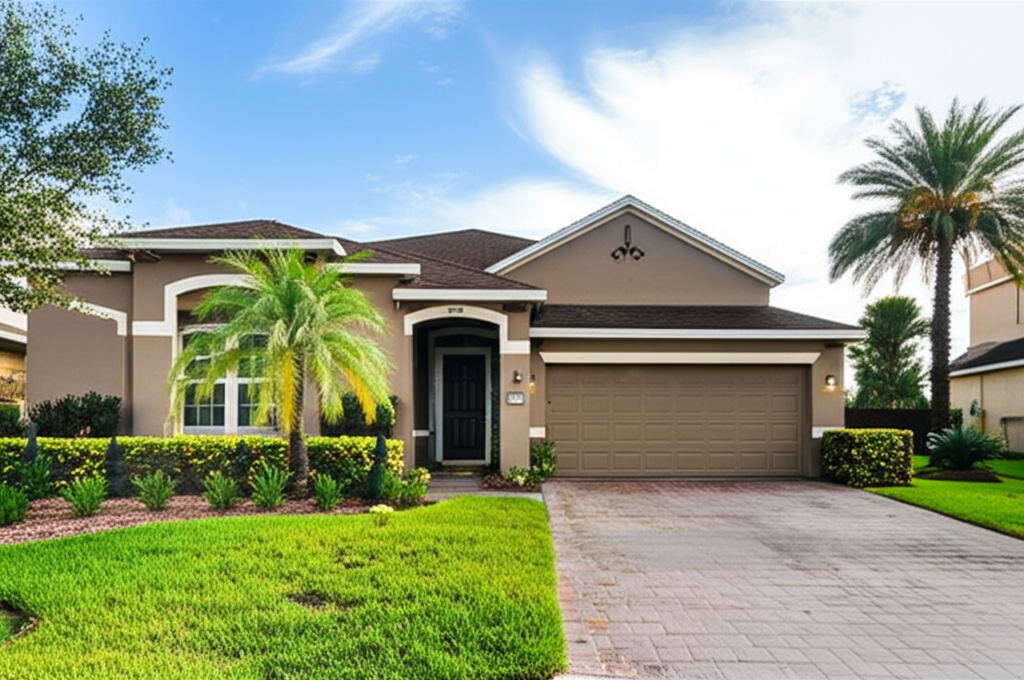Laminate Flooring, Formaldehyde, and Your Home Purchase: What Buyers Need to Know
When you walk into a home with fresh-looking laminate floors, it’s easy to picture your furniture, your routines, and the life you’re about to build there. What you may not picture is the resin that holds those planks together—or the small amounts of formaldehyde that some laminate products can emit. For most buyers, this isn’t top of mind until a friend mentions it or it pops up on an inspection report. If you’re shopping for a home, understanding how laminate flooring and formaldehyde relate can help you make a confident, informed decision without derailing your purchase.
Why Formaldehyde Comes Up With Laminate
Most laminate flooring has a core made from composite wood, such as medium-density fiberboard (MDF) or high-density fiberboard (HDF). These are made by bonding wood fibers together with adhesives, historically including urea-formaldehyde resins. Formaldehyde is a volatile organic compound (VOC), which means small amounts can off‑gas into the air, especially when products are new or when a home is warm and humid. Emissions typically decline over time, much like the “new car smell” fading after a few weeks or months.
In everyday life, formaldehyde is found at very low levels in many indoor environments from a mix of sources—furnishings, cabinetry, textiles, even some cleaning products. At higher concentrations, it can irritate eyes, nose, and throat, and may trigger asthma symptoms in sensitive people. It’s also classified as a known human carcinogen with long-term, high-dose exposure. Those facts sound alarming, but context matters: residential levels are usually low, and regulations have substantially tightened what’s allowed in composite wood products, including the cores used under laminate.
The Regulatory Backdrop: What Changed and Why It Matters
If you’ve heard of a widely publicized investigation about laminate flooring and formaldehyde around 2015, you’re not imagining it. That coverage spurred scrutiny and accelerated already ongoing regulatory efforts. Today, composite wood products nationwide must meet formaldehyde emission limits under federal law. You’ll often see references to standards like CARB Phase 2 (a California program that many manufacturers adopted nationwide) and the federal TSCA Title VI rule. Both require that hardwood plywood, MDF, and particleboard used in products such as laminate flooring cores meet strict emission limits, come from certified mills, and carry compliant labeling. Manufacturers also offer “ULEF” (ultra‑low emitting formaldehyde) and “NAF” (no‑added formaldehyde) options.
Why this matters to a buyer: if the flooring in a home was manufactured and installed in recent years, it’s likely covered by these standards. Older installations, or unbranded discount materials from the mid‑2010s and earlier, warrant closer attention.
What You Can Observe During Showings
A home tour isn’t a laboratory, but you can still gather useful clues. Start with your senses. If you step into a room and notice a sharp, “chemical” odor that isn’t cleaning product, pay attention to whether it’s strongest near the floors or built-in cabinetry. Open a closet or pull a floor transition strip gently with permission—sometimes the underside of planks or leftover cartons stored in the garage will have labels indicating the manufacturer and compliance statements. Ask the listing agent or seller when the floors were installed and whether they have purchase receipts or product documentation. A straightforward answer such as “2019, TSCA Title VI compliant laminate, brand X” is different from “not sure, the previous owner installed it.”
Age is a practical proxy. An installation from 2020 with documentation generally poses a lower concern than budget laminate installed in 2012 with no verifiable specs. This doesn’t mean the older flooring is unsafe; it simply signals where you may want additional diligence.
Testing Options: From DIY to Professional
If you like a house but want peace of mind, air testing is one way to get it. Do-it-yourself passive badges can be placed for 24–48 hours to measure average formaldehyde levels and sent to a lab for analysis. These kits are relatively affordable and fast. They won’t identify which product is emitting or confirm a specific brand’s compliance, but they answer the key question: what’s in the air you would actually breathe?
For more robust evaluation, an indoor air quality consultant can use calibrated sampling methods, assess ventilation, temperature, and humidity, and interpret results in context. A seasoned professional will also look for other sources that can skew readings, such as recent painting, new furnishings, or poorly ventilated spaces. Expect professional testing to cost more, but it often pays off in negotiation clarity.
Product emission testing—the kind performed in small environmental chambers using industry standards—is how manufacturers certify compliance. That kind of testing can’t be done during a typical home inspection window. Instead, ask for manufacturer certificates or invoices indicating the product was certified to the applicable standards.
How to Structure Your Offer and Inspection Window
Most buyers rely on an inspection contingency, which is language in your purchase agreement that gives you a set period to investigate the property and either proceed, negotiate, or cancel without losing your earnest money. Earnest money is the deposit you place to show good faith; it sits in escrow—a neutral holding account—until closing. If you plan to test for air quality, tell your agent up front so they can build in enough days and any necessary access for sampling.
It’s reasonable to add an environmental testing right as part of your inspection contingency. Keep the standard clear enough to avoid disputes. Many buyers reference recognized guidelines or simply state that if indoor formaldehyde levels are above typical residential background, the buyer may request repairs, credits, or cancellation. Your agent and, where appropriate, an attorney can tailor the language to local norms. The goal is not to litigate science during escrow; it’s to create a path to resolution.
Negotiating If You Find a Problem
Imagine you fall in love with a 2008 townhouse that had bargain laminate installed in 2014. A professional test during your 10-day inspection period shows a slightly elevated average indoors compared with typical newer homes. Rather than walking away, your agent proposes a solution: the seller provides a credit at closing to replace the flooring with a low‑emitting option. The parties agree to a $6,500 credit based on a contractor’s written quote to remove and replace about 900 square feet with a modern, certified product. Because work can’t be completed before closing, your lender agrees to an escrow holdback—an amount temporarily set aside from the seller’s proceeds—to ensure funds are available for the post‑closing flooring project. You move forward, replace the floors within two weeks, and your follow‑up test reads comfortably lower.
Credits aren’t the only tool. Sometimes a seller is happy to handle replacement before closing; other times, you may agree to a price reduction in lieu of repairs. In competitive markets, you might accept the risk and plan to replace after closing, but adjust your budget and timeline accordingly. What matters is quantifying the issue and converting it into a clear plan—work scope, cost, and timing—so both sides are protected.
Replacement, Mitigation, and Costs
If you decide to replace flooring, the good news is that laminate removal and installation are straightforward compared to structural repairs. Installed costs vary by market and product quality, but ballpark figures help frame negotiations. Removal and disposal might run about one to two dollars per square foot. New laminate or luxury vinyl plank often lands in the four to eight dollars per square foot installed, while engineered hardwood can climb higher depending on species and finish. Underlayment, baseboards, transitions, and furniture moving add to the total. Written quotes during inspection provide leverage and reduce surprises.
If replacement isn’t practical, mitigation can help. Increasing fresh-air ventilation is the quickest short‑term lever, especially before move‑in when windows can be opened and fans run. Keeping indoor humidity in the 30–50 percent range and avoiding excessive heat reduces off‑gassing. Some air purifiers are designed to remove gases using activated carbon or specialized catalytic media; standard HEPA-only units capture particles, not formaldehyde. Sealants marketed for composite wood can sometimes be applied to exposed edges or undersides to reduce emissions, though they’re less effective on fully sealed laminate surfaces. Mitigation is a bridge, not a substitute for addressing an offending product when warranted.
New Construction and Remodels: Ask for the Right Documentation
Buying new can be reassuring, but documentation still matters. Builders vary in their specifications; some standardize on low-emitting materials across the board, others allow substitutions. During your selections meeting or pre‑drywall walk, ask for confirmation that composite wood products, including flooring cores, cabinets, and shelving, are compliant with current emission standards. Many manufacturers explicitly label products as TSCA Title VI compliant and offer ULEF or NAF options. A brief conversation now can save you the cost of post‑closing tests and changes.
If you’re considering a home that was recently flipped, request product invoices and brand information for all new finishes. Fast-turn renovations sometimes rely on offshore or closeout materials. A seller who can readily provide receipts and labels gives you more confidence than one who cannot.
Disclosures, Appraisals, and Lending: Setting Expectations
Unlike lead-based paint in pre‑1978 housing, there’s no universal federal disclosure that sellers must make specifically about formaldehyde in site‑built homes. Some states require sellers to disclose known environmental hazards, and some condo associations keep records of renovation materials used in common elements. If formaldehyde concerns are important to you, ask direct questions and request documentation during your due diligence. Sellers are generally obligated to answer truthfully, but they may not have deep knowledge about flooring composition installed years earlier.
Appraisers and lenders focus on value and the property’s basic habitability. Indoor air measurements typically don’t factor into appraisals unless there’s a broader condition affecting safety or marketability. Government-backed loans emphasize safe, sound, sanitary housing; in practice, a confirmed indoor air issue might need to be resolved if it rises to that level. Most of the time, this remains a buyer–seller negotiation rather than a lender mandate, so plan your testing and conversations within your inspection timeline.
Health, Comfort, and Context
For most homes, especially those with modern, compliant materials, formaldehyde levels are modest and manageable. If someone in your household is particularly sensitive—say, a child with asthma or an adult with chemical sensitivities—air testing can be a smart precaution and a small investment relative to the overall purchase. It’s also worth remembering that indoor air quality is cumulative. New cabinets, fresh paint, newly delivered furniture, and carpets can add their own VOCs. If you plan a big post‑closing furniture refresh, consider spacing deliveries or ventilating well to keep the overall load low.
Practical Steps to Move Forward Confidently
Start by asking about the age and brand of the laminate, and look for documentation showing compliance with current emission standards. If you love a house but lack paperwork, build a brief testing window into your inspection contingency. If results raise concerns, quantify the cost to replace or mitigate and negotiate a credit, repair, or price adjustment. If levels are in a comfortable range, proceed and manage the basics—ventilation, humidity, and sensible product choices—to keep your home’s air fresh. Keep your agent in the loop so your contractual timelines and rights align with your plans.
The ultimate goal isn’t to turn your home search into a science project. It’s to respect a legitimate question, address it with facts and options, and then get back to evaluating the home’s layout, neighborhood, and long-term suitability. With a little diligence, laminate flooring doesn’t have to be a mystery or a deal-breaker—it can simply be one more box you check on the way to closing day.
Final Word
Buying a home is a mix of heart and homework. Formaldehyde in laminate flooring sits squarely in the “homework” category: worth understanding, straightforward to assess, and solvable through smart negotiation or simple material choices. Equip yourself with the right questions, lean on your agent and qualified professionals, and keep perspective. You’re not just buying floors—you’re buying the place where your life happens. Aim for both comfort and clarity, and you’ll walk across those floors with confidence.




